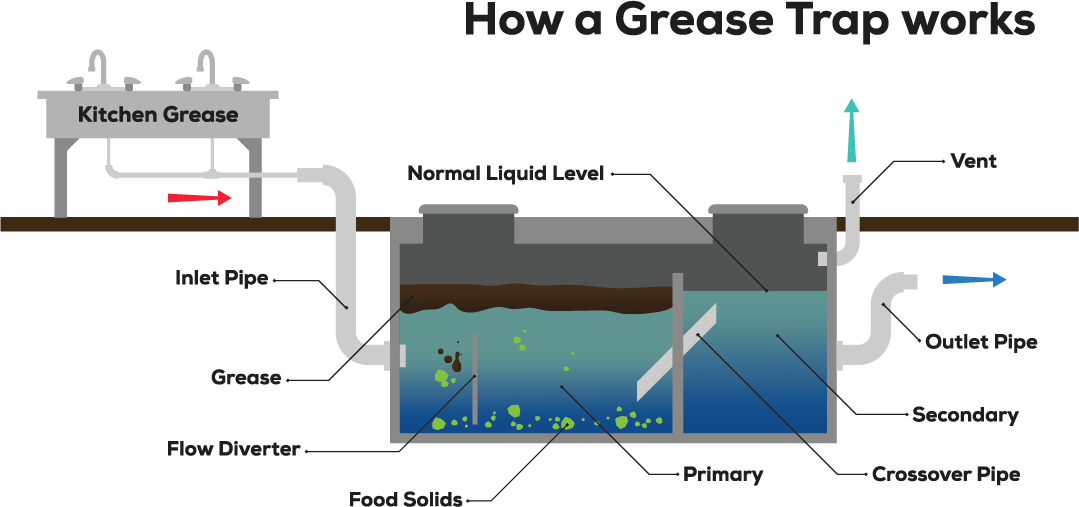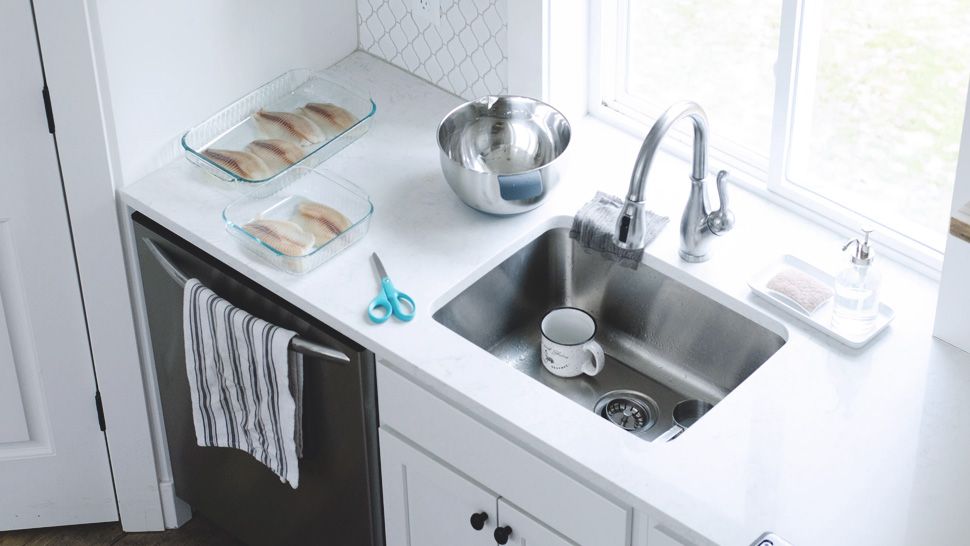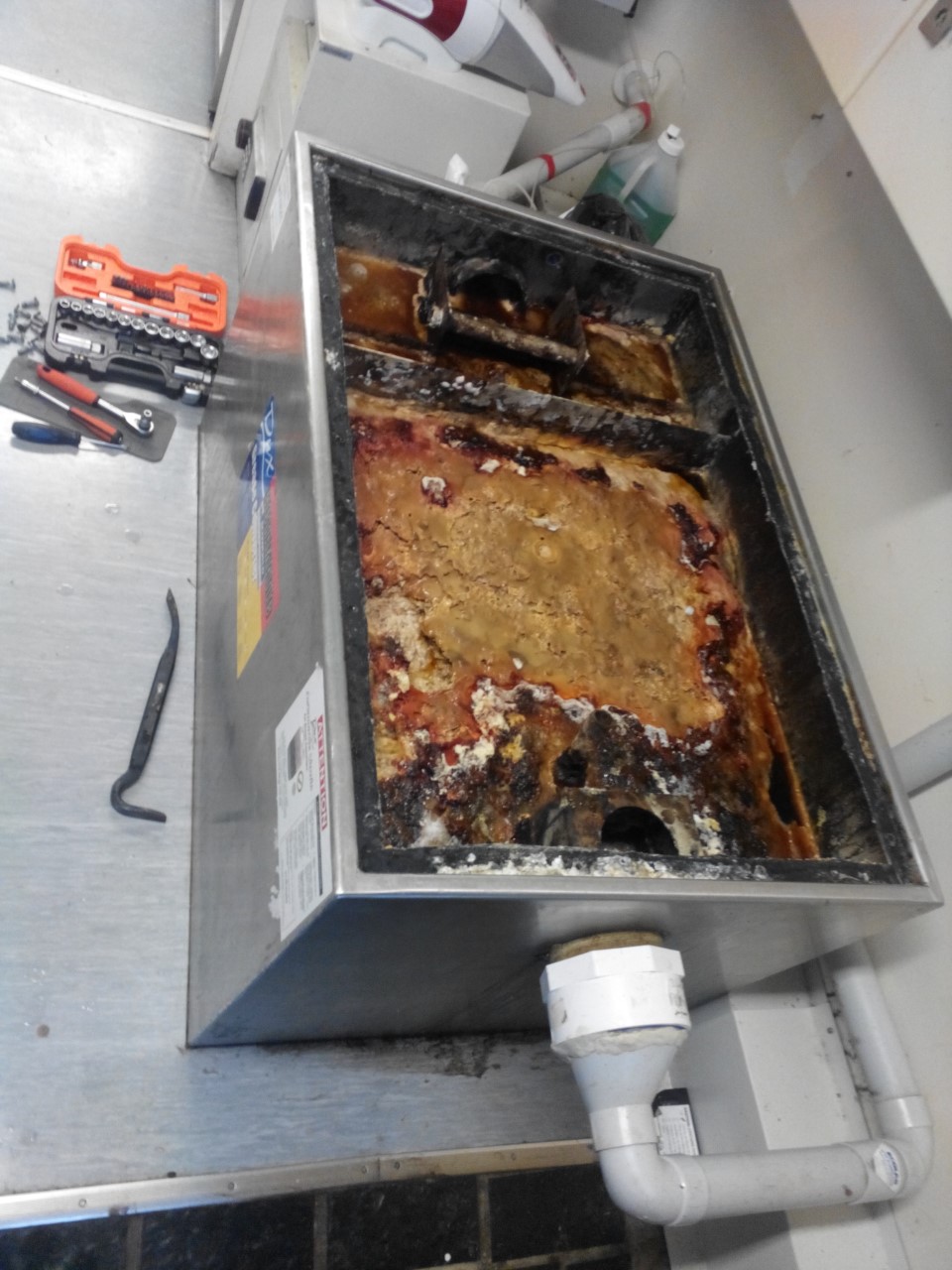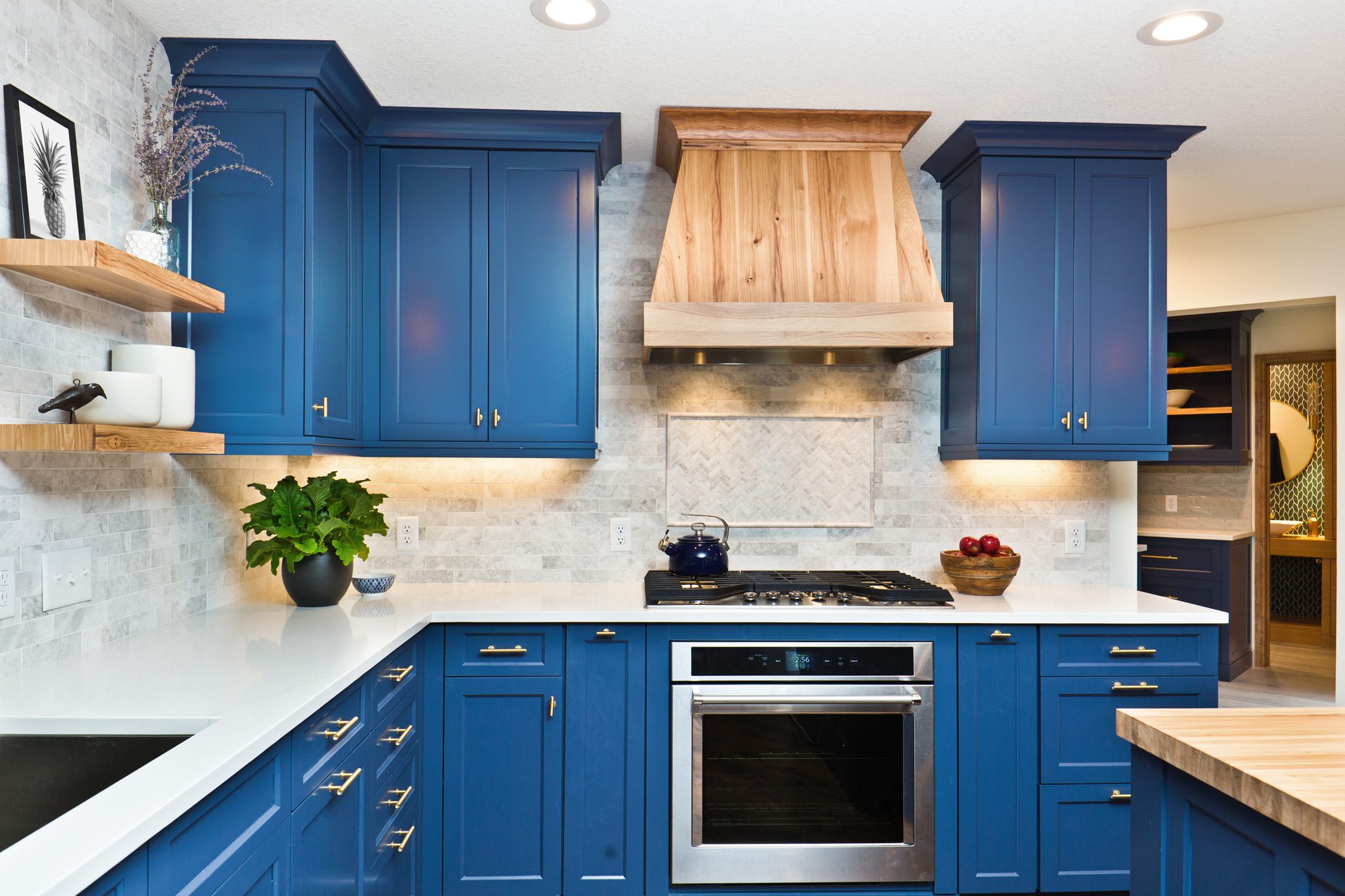1. Grease Trap Sizing and Design for Residential Kitchens
If you're a homeowner or a renter, you know how important it is to keep your kitchen clean and functioning properly. But did you know that the grease and oil you use in your cooking can cause major problems for your plumbing system? That's where a residential grease trap comes in.
Grease traps are specifically designed to capture and separate fats, oils, and greases from your kitchen wastewater before it enters the main sewer line. This prevents clogs, backups, and costly plumbing repairs. But with so many different options available, how do you know which grease trap design is best for your home kitchen?
2. How to Properly Design a Grease Trap for Your Home Kitchen
When it comes to designing a residential grease trap, there are a few key factors to consider. The first is sizing. A grease trap that is too small won't be able to handle the amount of grease and oil produced in your kitchen, while a grease trap that is too large may be unnecessarily expensive.
The size of your grease trap will depend on the number of sinks and dishwasher in your kitchen, as well as your average daily water usage. It's also important to consider the type of food you typically cook and the amount of grease and oil it produces. For larger families or those who cook more frequently, a larger grease trap may be necessary.
3. Residential Kitchen Grease Trap Installation Guide
Once you've determined the appropriate size for your grease trap, the next step is installation. While some homeowners may try to install a grease trap themselves, it's best to hire a professional plumber to ensure proper installation and compliance with local building codes.
During the installation process, your plumber will determine the best location for the grease trap, typically near the sinks and dishwasher. They will also connect the grease trap to the main sewer line and install an inlet and outlet pipe. The entire process can take anywhere from a few hours to a full day, depending on the complexity of the installation.
4. Best Practices for Designing a Residential Grease Trap System
In addition to proper sizing and installation, there are a few best practices to keep in mind when designing a residential grease trap system. One key factor is accessibility. Make sure your grease trap is easily accessible for regular maintenance and cleaning.
It's also important to consider the type of grease trap that best suits your needs. There are automatic, manual, and passive grease traps available. Automatic and manual traps require regular maintenance, while passive traps are designed to be self-cleaning.
5. Understanding the Importance of Proper Grease Trap Design for Residential Kitchens
Proper grease trap design is crucial for maintaining a healthy and efficient plumbing system in your home kitchen. Without a properly sized and installed grease trap, fats, oils, and greases can accumulate in your pipes and cause clogs and backups. This can lead to unpleasant odors, slow drainage, and even costly plumbing repairs.
By investing in a quality grease trap and following proper design and maintenance practices, you can protect your home's plumbing system and avoid potential issues down the line.
6. Designing a Grease Trap for a Small Residential Kitchen
If you have a small kitchen, you may think that a grease trap isn't necessary. However, even small amounts of grease and oil can cause problems for your plumbing system over time. Fortunately, there are grease trap designs available specifically for smaller kitchens.
An under-sink grease trap is a great option for smaller kitchens, as it can easily fit underneath your sink and still effectively capture and separate grease and oil from your wastewater.
7. Residential Kitchen Grease Trap Maintenance and Cleaning Tips
In order for your grease trap to function properly, regular maintenance and cleaning are essential. The frequency of maintenance will depend on the type of grease trap you have, but generally, it's recommended to have your grease trap cleaned every 3-6 months.
During cleaning, the accumulated grease and oil will be removed from the trap and disposed of properly. Your plumber may also inspect the trap for any damage or wear and tear that may require repairs.
8. Choosing the Right Size and Type of Grease Trap for Your Home Kitchen
As mentioned earlier, the size and type of grease trap you choose will depend on your specific kitchen and cooking habits. In addition to under-sink traps for smaller kitchens, there are also above-ground and below-ground traps available for larger homes or commercial kitchens.
The type of grease trap you choose will also depend on your budget and preference for manual or automatic maintenance. Your plumber can help you determine the best option for your needs.
9. Common Mistakes to Avoid When Designing a Residential Grease Trap System
When it comes to designing a residential grease trap system, there are a few common mistakes that homeowners should avoid. These include choosing a grease trap that is too small, not having it installed by a professional, and neglecting regular maintenance and cleaning.
It's also important to avoid pouring grease, oil, and food scraps down your sink, as this can contribute to clogs and backups in your plumbing system.
10. The Benefits of Installing a Grease Trap in Your Residential Kitchen
Overall, there are numerous benefits to installing a grease trap in your home kitchen. Not only does it protect your plumbing system and prevent costly repairs, but it also helps to keep your kitchen clean and odor-free.
In addition, many cities and municipalities require residential grease traps to be installed in homes with high cooking volumes. By following proper design and maintenance practices, you can ensure that your home is compliant with local regulations.
In conclusion, proper grease trap design is essential for maintaining a healthy and efficient plumbing system in your residential kitchen. By considering factors such as size, installation, and maintenance, you can choose the best grease trap design for your specific needs and keep your kitchen running smoothly for years to come.
Maximizing Efficiency and Sustainability with a Residential Grease Trap Design for Kitchen

The Importance of Proper Grease Management
 Proper waste management is essential for any household, and this includes the disposal of grease and oil from cooking. Failing to do so can result in clogged pipes, foul odors, and even environmental harm. The most efficient and sustainable solution to this problem is a residential grease trap design for the kitchen.
Grease traps
are plumbing devices that trap and collect grease and oil from kitchen wastewater before it enters the sewer system. This prevents the accumulation of grease in pipes and sewers, reducing the risk of blockages and potential damage to the environment.
Kitchen grease traps
also help to maintain the integrity of your plumbing system, saving you from costly repairs in the long run.
Proper waste management is essential for any household, and this includes the disposal of grease and oil from cooking. Failing to do so can result in clogged pipes, foul odors, and even environmental harm. The most efficient and sustainable solution to this problem is a residential grease trap design for the kitchen.
Grease traps
are plumbing devices that trap and collect grease and oil from kitchen wastewater before it enters the sewer system. This prevents the accumulation of grease in pipes and sewers, reducing the risk of blockages and potential damage to the environment.
Kitchen grease traps
also help to maintain the integrity of your plumbing system, saving you from costly repairs in the long run.
Designing an Effective Residential Grease Trap
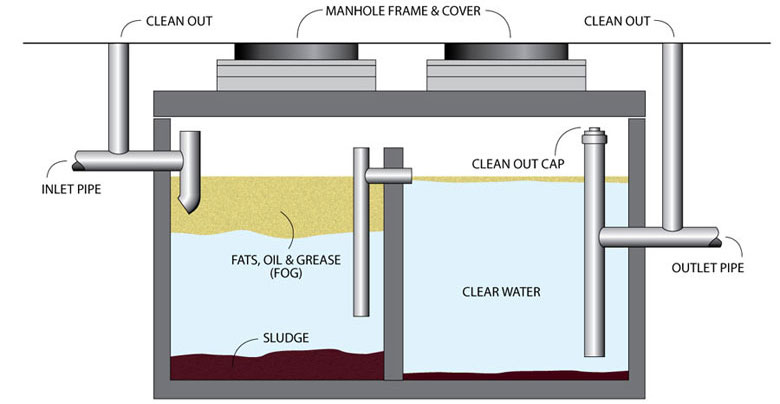 A well-designed residential grease trap should not only effectively trap grease but also be easy to maintain and environmentally friendly. This is why
customized grease trap design
is crucial, as it allows for a tailored solution that meets the specific needs and layout of your kitchen.
Firstly
, the size of the grease trap should be determined based on the amount of grease produced in your household. A larger family or a commercial kitchen would require a bigger grease trap compared to a smaller household.
Secondly
, the placement of the grease trap is also essential. It should be installed as close to the source of grease as possible to ensure maximum efficiency.
Next
, the type of material used for the construction of the grease trap is crucial.
Stainless steel
is the most commonly used material as it is durable, corrosion-resistant, and easy to clean. However,
plastic
and
concrete
grease traps are also available, with their own set of advantages and disadvantages.
A well-designed residential grease trap should not only effectively trap grease but also be easy to maintain and environmentally friendly. This is why
customized grease trap design
is crucial, as it allows for a tailored solution that meets the specific needs and layout of your kitchen.
Firstly
, the size of the grease trap should be determined based on the amount of grease produced in your household. A larger family or a commercial kitchen would require a bigger grease trap compared to a smaller household.
Secondly
, the placement of the grease trap is also essential. It should be installed as close to the source of grease as possible to ensure maximum efficiency.
Next
, the type of material used for the construction of the grease trap is crucial.
Stainless steel
is the most commonly used material as it is durable, corrosion-resistant, and easy to clean. However,
plastic
and
concrete
grease traps are also available, with their own set of advantages and disadvantages.
Benefits of a Residential Grease Trap Design for Kitchen
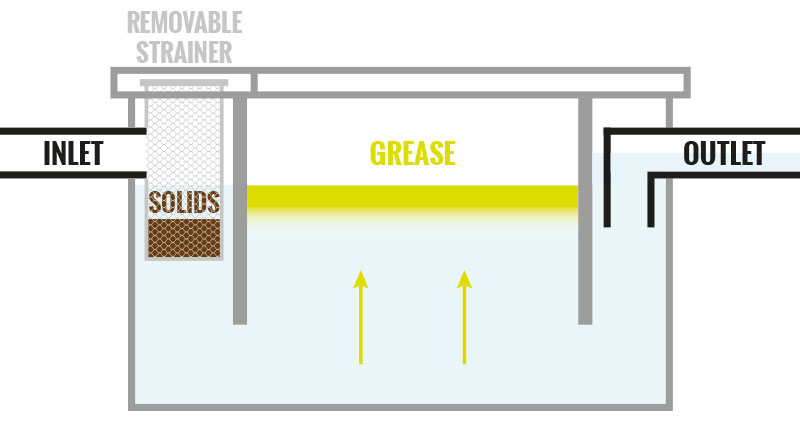 Aside from preventing costly repairs and protecting the environment, a residential grease trap design for the kitchen offers several other benefits.
Efficiency
is a primary advantage, as a well-designed grease trap can effectively remove up to 90% of grease from wastewater. This reduces the risk of clogging and any associated maintenance costs.
In addition, a residential grease trap design can also save you money on
wastewater fees
. Many municipalities charge higher fees for households that produce excessive amounts of grease, and a grease trap can significantly reduce the amount of grease in your wastewater.
Aside from preventing costly repairs and protecting the environment, a residential grease trap design for the kitchen offers several other benefits.
Efficiency
is a primary advantage, as a well-designed grease trap can effectively remove up to 90% of grease from wastewater. This reduces the risk of clogging and any associated maintenance costs.
In addition, a residential grease trap design can also save you money on
wastewater fees
. Many municipalities charge higher fees for households that produce excessive amounts of grease, and a grease trap can significantly reduce the amount of grease in your wastewater.
Conclusion
 In conclusion, a well-designed residential grease trap for the kitchen is essential for efficient and sustainable waste management. It not only protects your plumbing system and the environment but also offers several benefits for your household. Consider investing in a customized grease trap design for your kitchen to maximize efficiency and promote sustainability.
In conclusion, a well-designed residential grease trap for the kitchen is essential for efficient and sustainable waste management. It not only protects your plumbing system and the environment but also offers several benefits for your household. Consider investing in a customized grease trap design for your kitchen to maximize efficiency and promote sustainability.


















